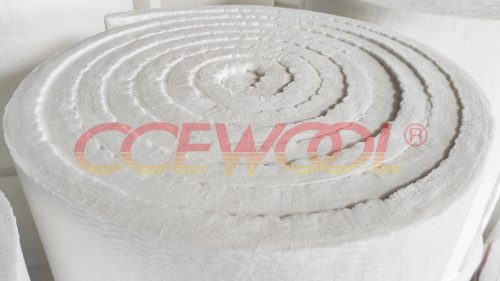What is ceramic insulation tape?
- 29 Oct, 2024
- Industry

In industrial production and high-temperature working environments, selecting the right insulation and protective materials is crucial. Ceramic insulation tape, known for its high efficiency and heat resistance, is widely used in various high-temperature equipment and industrial fields due to its excellent performance. So, what is ceramic insulation tape? This article will introduce the characteristics of CCEWOOL® ceramic fiber tape and its applications in the industry.
What is Ceramic Insulation Tape?
Ceramic insulation tape is a high-temperature resistant tape made from high-purity ceramic fiber material, known for its superior thermal and insulation properties. CCEWOOL® ceramic fiber tape can withstand temperatures exceeding 1000°C while providing excellent insulation and heat protection for electrical equipment and high-temperature operations, preventing heat loss and energy leakage.
Key Features of CCEWOOL® Ceramic Fiber Tape
Excellent High-Temperature Resistance
CCEWOOL® ceramic fiber tape can withstand extremely high temperatures, up to and above 1000°C. In high-temperature environments, it maintains its structural stability and insulation performance, ensuring safe operation of equipment.
Outstanding Insulation Properties
As an insulation material, ceramic fiber tape has excellent electrical insulation properties, effectively preventing electrical current leakage. This makes it an ideal choice for protecting high-temperature electrical equipment and cables.
Strong Corrosion Resistance
CCEWOOL® ceramic fiber tape remains effective in corrosive environments such as acidic or alkaline conditions, unaffected by external factors, ensuring long-term stable operation and extending equipment life.
Flexible and Easy to Install
Unlike other high-temperature resistant materials, CCEWOOL® ceramic fiber tape is highly flexible and can be easily cut and installed according to specific needs, making it suitable for various complex application scenarios.
Applications of CCEWOOL® Ceramic Fiber Tape
Wrapping High-Temperature Pipes and Equipment
In the outer wrapping of high-temperature industrial pipes and equipment, CCEWOOL® ceramic fiber tape provides effective insulation and protection, reducing heat loss and improving equipment efficiency.
Electrical Equipment Insulation
Thanks to its excellent insulation properties, ceramic fiber tape is widely used for insulation protection of electrical equipment and cables, ensuring the safe and stable operation of electrical systems in high-temperature environments.
Industrial Furnace Sealing
CCEWOOL® ceramic fiber tape can be used for sealing industrial furnace doors, effectively preventing heat leakage and improving internal temperature stability, thereby increasing the efficiency of heat treatment processes.
CCEWOOL® ceramic fiber tape offers outstanding high-temperature resistance, insulation properties, and corrosion resistance, making it highly applicable in high-temperature industrial fields. Whether for heat protection of equipment or electrical insulation, CCEWOOL® ceramic fiber tape is an ideal choice.



